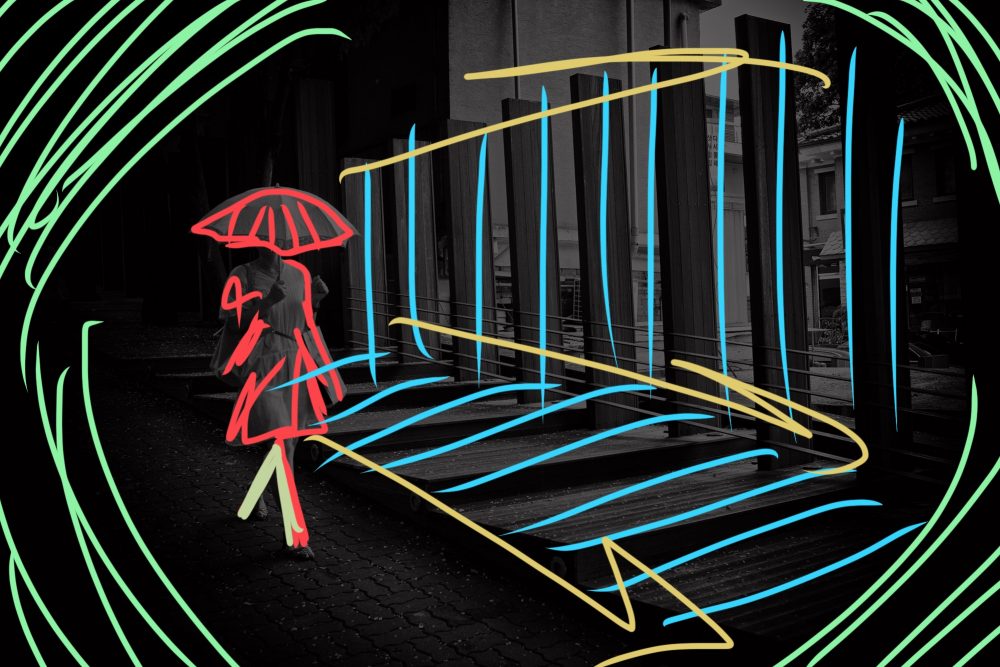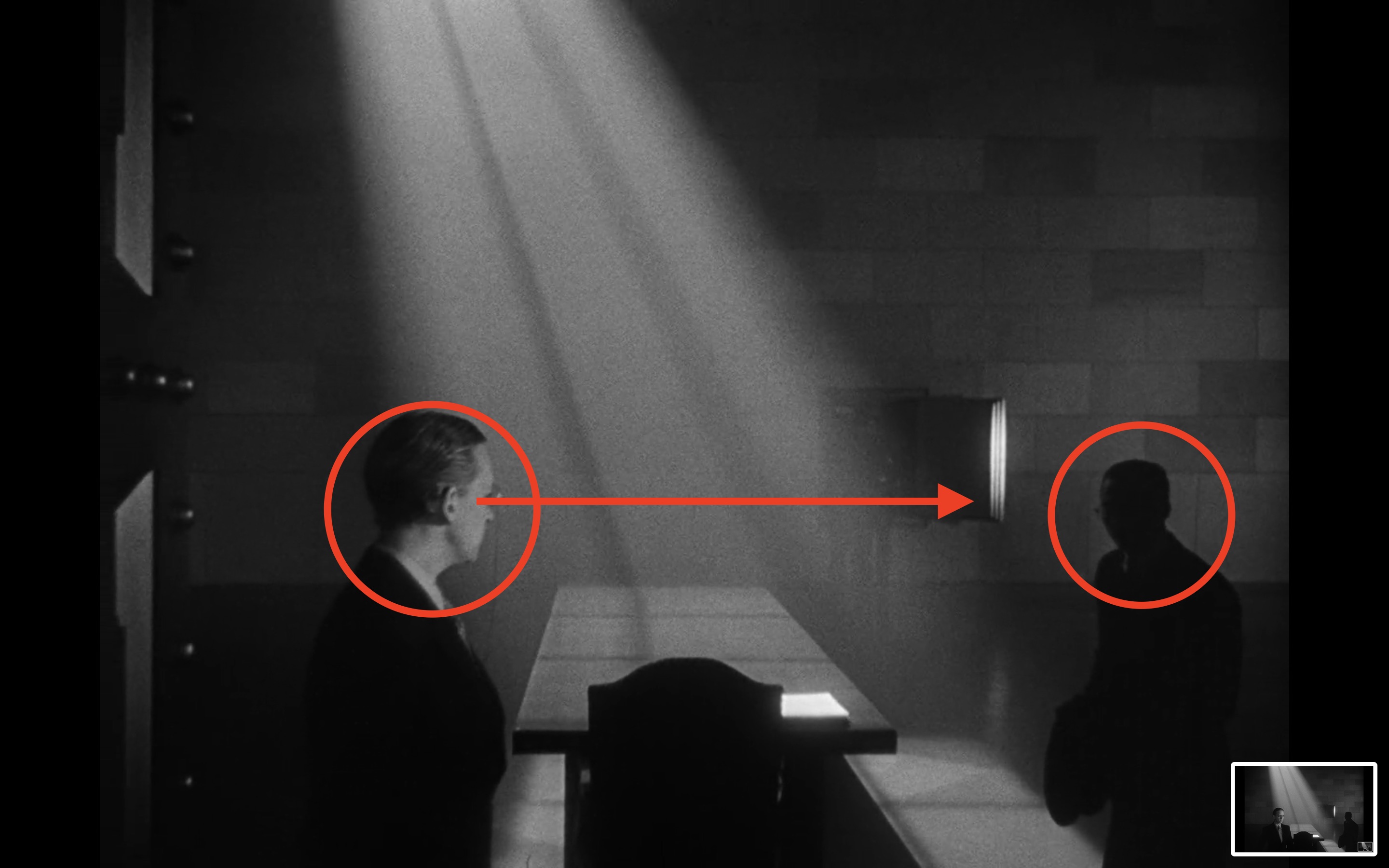Study vectors (arrows) to make better compositions:
Dear friend,
An interesting idea:
A lot of compositional concepts in photography come from mathematics– specifically, geometry.
I stumbled upon this idea purely by chance– by looking at geometry and mathematic textbooks at the house of my friend Alexander Amy, and my other buddy Kevin.
One of the concepts I want to explore with you is this notion of a ‘vector’ (AB−→), also known as a ‘Euclidean vector‘ (discovered by our friend, the geometrician Euclid– from his book, ‘Elements‘).
What is a vector?

The word ‘vector’ comes from Latin, which means “carrier, transporter.” It comes from the word, ‘veho’– which means “I carry, I transport, I bear.”

So essentially, a vector is an arrow that (in the terms of photography or composition) transports or directs your eye a certain direction.
Why vector?

I like the idea of ‘cross-pollination‘ — the basic concept that we can mix different fields of knowledge to discover new ideas.

For example, one big interest I have at the moment is this:
Math/Geometry x Photography
The terminology ‘vector’ is useful because it concertizes something we already know in photography:
When we look at a picture, our eyes are directed by vectors (arrows).
Let us examine deeper.
Eye Contact

You can draw a vector (an arrow) that follows the movement of the direction that your subjects look at.
Vectors get very interesting when you have a scene with multiple subjects looking in different directions, like this scene in Citizen Kane:

Vectors with visual elements

Another scene from Citizen Kane: Note the low angle composition, and the elements in the background which point in different directions– outlined with vectors (screenshot tool with MacOS Mojave):

What direction is the thing going?

If you imagine your subjects as vectors (arrows)– ask yourself:
What direction is it heading?

A tip:
Add some negative space in front of the direction the vector is heading:



Vectors which come out towards you

One of the great things about studying vectors is this:
You can have vectors (arrows) which go INTO a picture (symbolized by (X)), or vectors which come OUT TOWARDS YOU (symbolized by the mathematical notation: (·)).
For example, let us look at this picture:

Outlining the eye which is coming towards you as a three-dimensional vector:




Imagine the poster in the background as this three dimensional head (seen from the side):

Apologies– not doing a good job explaining this. Let us move on.
Vectors in three-dimensions:

An easy way to imagine vectors (arrows) in three dimensions:
Stick out your three fingers like this– and have them point in opposite directions (x, y, z) axis.

How objects are rotated in three dimensions:

Applied to the real world — let us see this scene from Citizen Kane:

Think to yourself– who is closest to you in the frame, and who is furthest away?
With edge detection added:

Now see the vectors added with the eye contact, and also the hand pointing:

Layers and vectors

One of my favorite Citizen Kane scenes– note all the epic layers, and the different vectors in which the subjects are looking:






Composition 101 >

Master composition for yourself:
Photography Composition Tips

- Vector (Arrow) Photography Composition
- Clear and Obscure (Chiaroscuro) Photography Composition
- How to Photograph Motion
- Photography Composition: Which Direction is Your Subject Looking?
- Blocking Technique in Photography
- How to Shoot a Triangle Photography Composition
- How to shoot a golden triangle composition in street photography
- 8 Simple Curve Composition Tips
- 5 Simple Henri Cartier-Bresson Composition Tips
- Foot Zoom
- Photography Composition: Light and Dark
- Street Photography Composition Lesson #16: Scale
- Shape, Arrangement, Position (S.A.P.) and Contour, Inter-Contact, Position (C.I.A.) in Photography
- 10 Tips How to Fill the Frame in Photography
- Look Up! 16 Photography Composition Perspective Tips
- 5 Simple Street Photography Composition Tips
- Depth Perception
- Golden Angle Composition in Street Photography
- Photographer as an “Arranging Artist”
- Dynamic Off-Center Street Photography Compositions
- 5 Essential Composition Tips in Photography
Color Theory

- Red and Green Composition Color Theory For Photographers
- The Ultimate Beginner’s Guide to Color Photography
- Opponent Process Color Theory For Photographers
- Color Theory For Photographers
- Color Manual
- How to Shoot Color Street Photography
Learn From the Masters of Composition

- 10 Lessons Matisse Can Teach You About Art and Life
- Henri Cartier-Bresson Composition
- 10 Timeless Lessons Edward Weston Can Teach You About Photography
- 10 Inspirational Sergio Larrain Compositions
- 5 Henri Cartier-Bresson Photography Composition Lessons
Dynamic Photography Composition 101

- Introduction to Dynamic Photography Composition
- How to Visually Analyze Your Photography Compositions
- Dynamic Tension: Opponent Based Theory For Photography
- Opponent Process Color Theory For Photographers
- Dynamic Photography Composition 101: Figure to Ground
Painting Compositions

Dynamic Photography Composition Tips

- 7 Simple Photography Composition Tips
- How to Make Aggressive Photography Compositions
- 10 Dynamic Photography Composition Tips
- How to Make More Dynamic Picture Compositions
- Unorthodox Photography Composition Techniques
- Deconstructed: Saigon Eric Kim Photos
Composition Theory

Take your composition to the next level:
- Gestalt Theory
- Juxtaposition
- Center Eye
- Low-Angle
- Dutch Angle
- Deep Depth
- Spacing
- Silhouette
- Leading Lines
- Figure to Ground
- Fibonacci Spiral
- Cropping
- Emotion
- Composition by Eric Kim
Street Photography Composition 101

For distilled lessons on composition, read the free ebook: “The Street Photography Composition Manual.”
Further articles to improve your compositions in photography:
- Composition Lesson #1: Triangles
- Composition Lesson #2: Figure-to-ground
- Composition Lesson #3: Diagonals
- Composition Lesson #4: Leading Lines
- Composition Lesson #5: Depth
- Composition Lesson #6: Framing
- Composition Lesson #7: Perspective
- Composition Lesson #8: Curves
- Composition Lesson #9: Self-Portraits
- Composition Lesson #10: Urban Landscapes
- Composition Lesson #11: “Spot the not”
- Composition Lesson #12: Color Theory
- Composition Lesson #13: Multiple-Subjects
- Composition Lesson #14: Square Format
Composition Theory

Learn compositional theory:
- Why is Composition Important?
- Don’t Think About Composition When You’re Shooting Street Photography
- How to Use Negative Space
- Street Photography Composition 101
- The Theory of Composition in Street Photography: 7 Lessons from Henri Cartier-Bresson
Compositional lessons from the masters of art
Composition lectures
Composition pictures/grids


Golden Diagonal Composition













